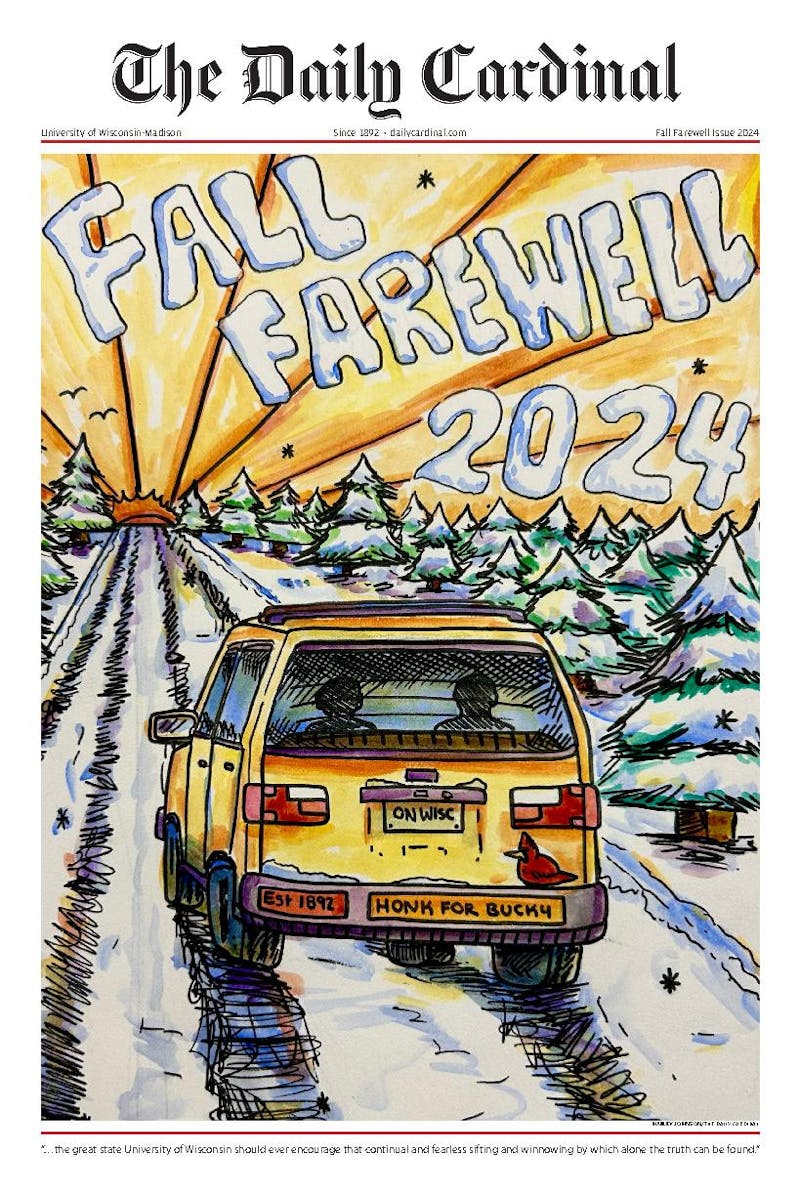Some campus-area bars don’t like black people or black music.
No bar owner or manager specifically said this statement outright, but there is no doubt that places like Wando’s Bar & Grill and The Double U filtering hip-hop music from their TouchTunes players sends that exact message to the campus and greater Madison community.
Jay Wando, one of only a few to respond to interview requests from Cardinal reporters, said he doesn’t want “gangster hip-hop” because it might draw in a crowd “not driven by UW-Madison students.”
He further defended his policy of filtering hip-hop music by claiming it to be a safety issue.
“It’s just because we want UW students to be safe in a bar environment,” he said. “I’ve been on campus for 29 years, and I’ve seen both sides of it.”
Our Editorial Board vehemently disagrees with this assertion. Listening to Lil Wayne or Drake does not create an unsafe environment. Furthermore, hip-hop is an interest of UW-Madison students despite our predominantly white campus, and that should be reflected in the city’s nightlife.
Students of color are already alienated in Madison due to Wisconsin’s drinking culture. In the 2015 Color of Drinking Survey administered by University Health Services, 48 percent of students of color said they experienced microaggressions from intoxicated UW-Madison students. Additionally, 40 percent of these students said they avoid specific areas of campus such as Langdon Street and State Street due to the large drinking culture.
There is a wide consensus among researchers and law enforcement that there is a link between the prevalence of alcohol and violence, according to a 2006 report prepared by the National Center for Alcohol Law Enforcement for the U.S. Department of Justice.
Many campus-area bars have filtered hip-hop music specifically citing its connection to safety issues. However, no similar consensus exists connecting the two.
Earlier this month, Madison Police Department Lt. Jason Freedman said during a Public Safety Review Committee meeting that MPD doesn’t track disturbances by genre of music.
“We certainly have had issues that came in from venues from time to time, but we focus on what the behavior is … we don’t track it by genre or anything like that,” Freedman, who oversees the Central District, said. “Other things tied to the licenses that establishments, bars have that kind of thing, but it’s not really by music taste.”
Shifting blame onto hip-hop music negates the problematic nature of having, on average, 245 outlets serving alcohol within a two-mile radius of campus, a statistic noted in a study published in the Wisconsin Medical Journal in 2015.
This is not an argument for prohibition or that any of these bars should close. However, the reasoning bar owners have used to filter hip-hop music is not supported by empirical evidence. If Wando’s wanted to keep UW-Madison students safe, they shouldn’t serve alcohol, especially by the fishbowl. Excessive alcohol use plays a larger role in violence than any hip-hop song ever will.
The notion that hip-hop is violent and not safe for young people to listen to is heard far too often without much to back it up. Consider Armando Saafir, a resident DJ at Liquid—a nightclub on University Avenue—who goes by DJay Mando.
“Since I’ve been young, there’s a stigma that hip-hop is violent and sexual and full of drugs, and that black people are bad,” Saafir, who started DJing as a hobby in high school, said. “The older generation, they were always saying the same things that bar owners were saying, so it doesn’t really surprise me that this is happening.”
Saafir is one of the few DJs in Madison emphasizing hip-hop in his work. He has developed a following that is diverse and his sets are well-received.
“With hip-hop, there’s diversity within the music, and it brings diverse people together … it doesn’t surprise me that me playing hip-hop had made me one of the most popular DJs in the city,” he said.
Hip-hop has a place in the UW-Madison community, and it drives the interests of many students. To deny that is to deny the work of First Wave Hip Hop and Urban Arts Learning Community, which is the first university program in the country that focuses on hip-hop culture. Crowds at recent concerts put on by artists such as Lil Wayne and Future featured UW-Madison students from a variety of backgrounds. Is this not the same crowd that bars should be drawing in?
“By getting rid of hip-hop, you’re not only isolating the minority community, but are also lessening the amount of pleasure you can bring to all the white people, because white people like hip-hop too,” Saafir, who is black and Latino, said.
We agree. Bars and Madison’s nightlife scene already alienate people of color. Denying the validity of hip-hop perpetuates a sense of fear and division. Others may claim that filtering out hip-hop music isn’t racist, but that objectively denies the history of hip-hop and its importance to many marginalized groups, especially students of color at UW-Madison who for so long have been structurally dismissed by the university.
Cardinal View editorials represent The Daily Cardinal’s organizational opinion. Each editorial is crafted independent of news coverage. Please send all comments, questions and concerns to editorialboard@dailycardinal.com.






